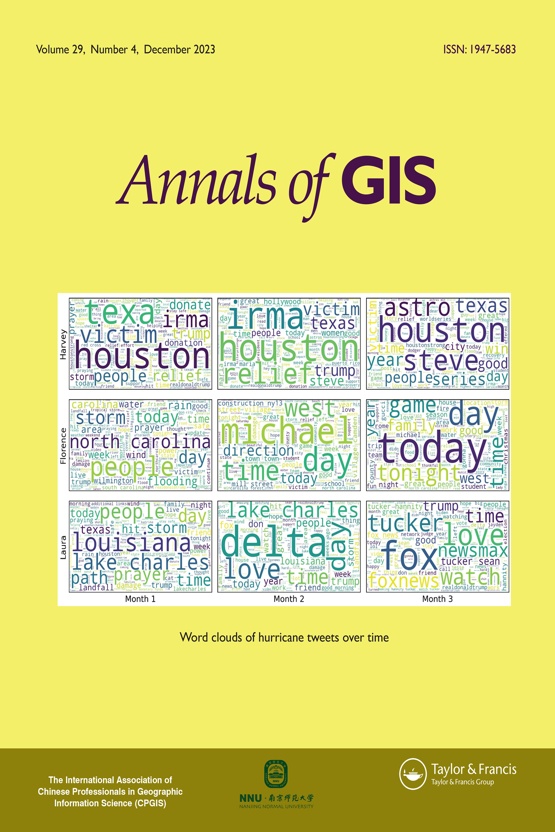Submit a Manuscript to the Journal
Annals of GIS
For a Special Issue on
GeoAI-driven spatiotemporal modelling and prediction: theories, methods and challenges
Manuscript deadline
04 July 2024

Special Issue Editor(s)
Feng Lu,
State Key Laboratory of Resources and Environmental Information Systems, Institute of Geographical Sciences and Natural Resources Research, Chinese Academy of Sciences.
[email protected]
Yu Liu,
Institute of Remote Sensing and Geographical Information Systems, Peking University, China
[email protected]
Qingfeng Guan,
School of Geography and Information Engineering, China University of Geosciences, China
[email protected]
Song Gao,
Department of Geography & Data Science Institute, University of Wisconsin-Madison, USA
[email protected]
Manzhu Yu,
Department of Geography, The Pennsylvania State University, USA
[email protected]
GeoAI-driven spatiotemporal modelling and prediction: theories, methods and challenges
In today’s rapidly evolving landscape, the convergence of sensor networks, advanced big data acquisition, and cutting-edge data analysis technologies has given rise to the value of spatiotemporal data applications. Spatiotemporal data encompass a wide array of information, ranging from environmental variables to human behaviors and urban dynamics. Accurately modelling and predicting the evolving trends of physical world and social environment with these spatiotemporal datasets holds immense significance, particularly for enabling well-informed decision-making and enhancing the capacity of governmental management.
The field of Geographic Artificial Intelligence (GeoAI) has emerged as a transformative force in making sense of this wealth of data. By combining geographical information, artificial intelligence, and spatiotemporal data analysis, GeoAI provides the tools and techniques needed to extract valuable insights, make forecasts, and derive actionable intelligence from complex geospatial and temporal datasets.
In this context, this special issue aims to serve as a platform for exploring and showcasing the latest advances in GeoAI and its applications in enhancing spatiotemporal modelling and prediction capabilities across a wide spectrum of application domains. By harnessing the synergy of artificial intelligence, geographical knowledge graph and data analytics, this special issue strives to address the burgeoning demand for enabling robust even interpretable representation, and getting deep insights of the changing trends of our world.
Topics of interest to this issue include, but are not limited to:
- Explainable AI for spatiotemporal modelling of geospatial data
- Knowledge-guided spatiotemporal prediction technologies
- Uncertainty quantification on spatiotemporal AI models
- AI model generalizability across spatiotemporal heterogeneity
- Large models and foundation models in geo-related domains
- Spatiotemporal modelling and prediction applications in intelligent transportation systems, environmental and natural resource management, natural disaster prevention and mitigation, public security, and emergency response, among others.
Looking to Publish your Research?
Find out how to publish your research open access with Taylor & Francis Group.
Choose open accessSubmission Instructions
Annals of GIS is an Open Access and internationally peer-reviewed academic journal (ESCI with a 2022 impact factor 5.0) focusing on the theory, methods, development and applications in geo-information science.
Annals of GIS uses double-anonymous peer review and supports format-free submission. More information can be found in the Instructions for Authors page. Authors submitting to this special issue should select the special issue name 'GeoAI-driven spatiotemporal modelling and prediction' during the submission process.
We look forward to your contributions. Please do not hesitate to contact the Guest Editors with any questions.